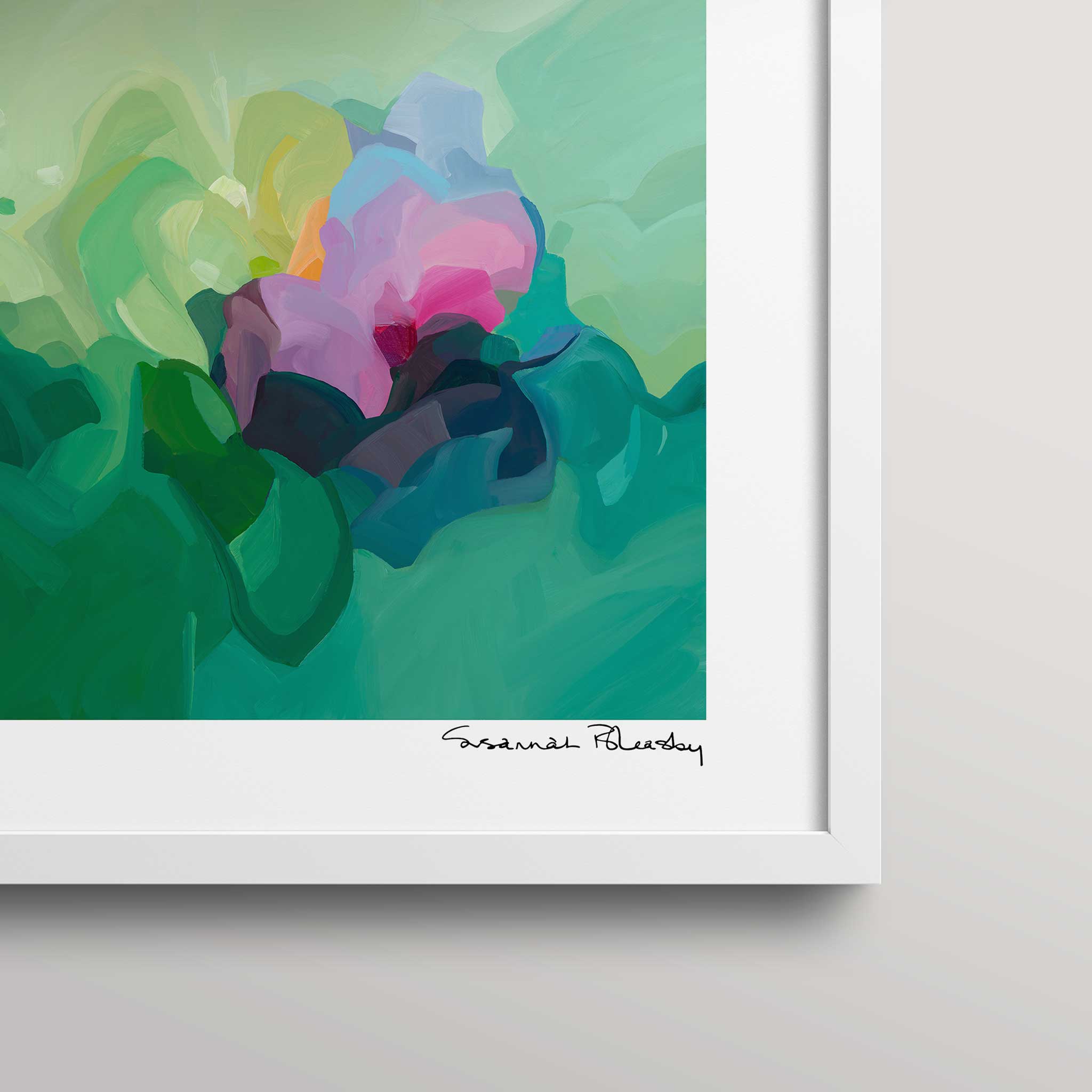
Framing Inspiration
Some of the most frequent questions I'm asked are about framing, and whether prints should be framed with a mat or not. While I can’t claim to be a framing specialist, I'm happy to share insights into different framing styles and provide a few examples. My goal is to help you on your way to find the perfect way to showcase your wall art and make it shine in your space!
Framing fine art prints
-

Framing with a mat
Is a mat important to framing? I think so. Mats create an additional border and gives a print ‘room to breathe’ by creating space between the image and the frame.
Image above: 'Afternoon Blue'
-

Framed without a mat
The choice of mat vs no mat is personal, and a matter of taste. Mats 'size up' smaller prints and many people opt to skip the map when they are framing larger print sizes.
Image above: 'Jade'
-

Float framing
"Floating" or "float mounting" is a style of framing where the art print sits on top of the matting. The elevation of the print compared to the matting adds depth, shadow creating extra drama.
Image above: 'Evening Over Evermore'
Other considerations for framing art prints
Fine art prints are delicate and beautiful, and the way you frame and display them will make a world of difference in their longevity and appearance. The right framing choices will help preserve your artwork for years to come.
Why use glazing for fine art prints?
Glazing is essential for fine art prints on paper. It acts as a protective barrier, shielding your artwork from dust, dirt, moisture and harmful UV light. However, even with UV-protective glazing, don't be hanging your art in direct sunlight as prolonged exposure will cause fading!
When selecting glazing, you'll typically have two options:
- Glass: durable and scratch-resistant, though heavier and more fragile.
- Acrylic: Lightweight and shatterproof, making it ideal for larger pieces or high-traffic areas.
Both kinds of glazing will have options for anti-reflective and UV-reflective coatings for enhanced preservation and display.
Unlike fine art prints on paper, canvas art prints don't require glazing and the framing options are a little different. You can read more about the options to frame your canvas art prints here.
To mat, or not to mat
Mats have a functional purpose beyond simply aesthetics. They separate the print from the glazing, keep it perfectly flat, and when you have your heart set on a certain frame that doesn’t quite conform to the dimensions of your print, a custom cut mat can help you bridge the difference.
As a rule, I suggest that people keep their mats simple and white. Netural tones like white ensure your art remains the focal point and that your display feels just as fresh in 20 years as it does today.
Choosing the right frame
The choice of framing style is a matter of personal taste and there is no one right way to do it. Howver, good framing does more than complement your decor, it protects your art and enhances its visual impact.
Work with a professional framer
Framing doesn't have to be overwhelming. Let a professional framer guide you through the possibilities so you can visualize the options to create a stunning presentation that highlights the beauty of your art. They can recommend the best materials and techniques to preserve your artwork while complementing your personal style.



